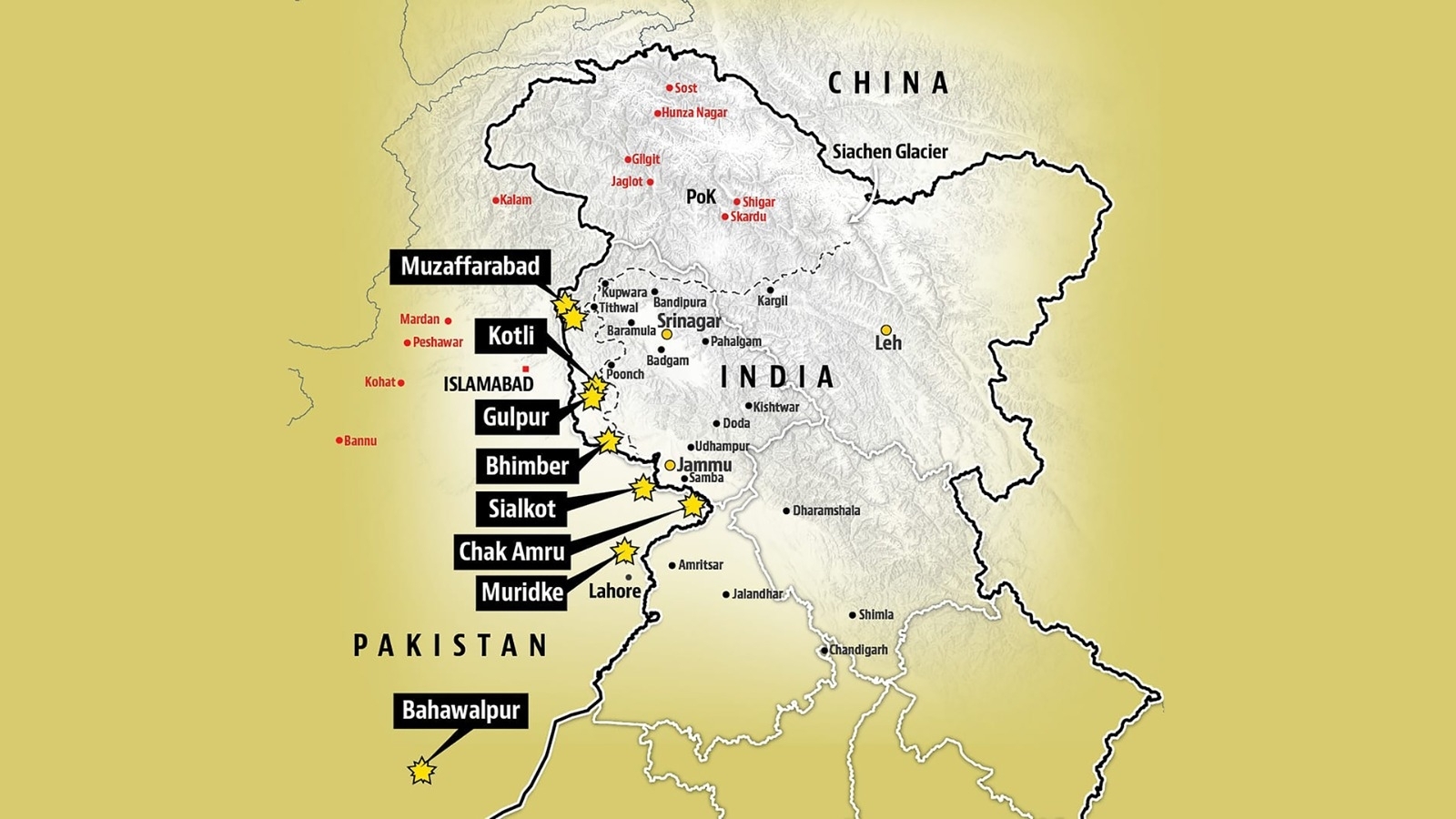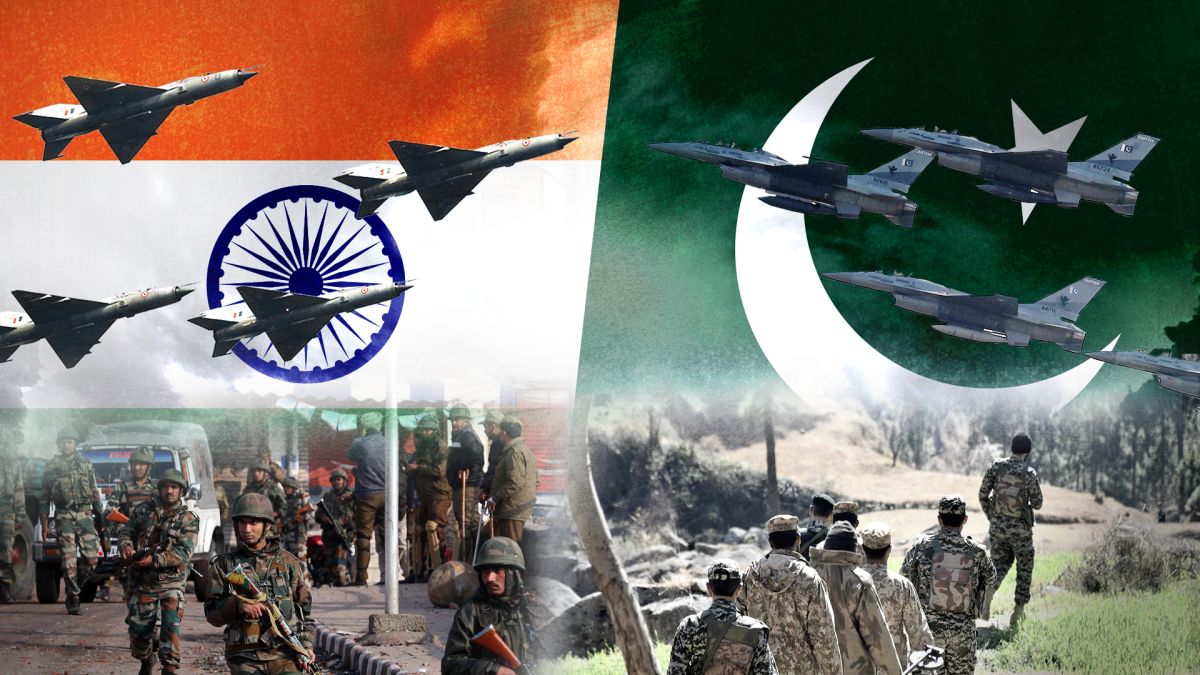The tempestuous relationship between the nuclear-armed neighbors, India and Pakistan, hit its breaking point on the morning of Wednesday, the 7th of May, 2025, when India launched a number of precision strikes under the cover of “Operation Sindoor.” The move came in the aftermath of a sudden spike in tension between the two nations and a deadly attack in Indian-administered Kashmir. The operation prompted swift condemnation and a military response from Pakistan, sending the relationship between the nuclear-armed countries, already one of the world’s most precarious, spinning back into the spotlight.
To make sense of Operation Sindoor, one needs to contextualise it vis-à-vis the details of what happened as per the Indian claim and the immediate reactions and counterclaims coming from Pakistan. It was not a standalone operation and was in response to previous attacks and in line with India’s policy on cross-border terrorism
The Precipice: A Crisis of Timing Before the Strikes
There had been increasing tensions between India and Pakistan in the weeks before Operation Sindoor. A major spark was an attack on tourists in Pahalgam, Indian-administered Kashmir, on April 22, 2025. The massacre led to the death of a large number of noncombatants, and it caused intense rage throughout India. Indian authorities promptly blamed the attack on militant groups based in Pakistan, citing it as further proof of state-sponsored terrorism.
The tragic incident had aggravated the already tense ties marked by heavily retaliating ceasefire violations by both sides along the Line of Control (LoC) and a war of words. India explicitly expressed determination to react to the attack and bring the perpetrators to justice. This built up an expectation and a fear of military action, playing into what happened on May 7th. A war of words and heightened military readiness on both sides of the border preceded the operation.
The Name and the Message: Significance of ‘Sindoor’
India’s codename for the military action as “Operation Sindoor“ was symbolically significant. Sindoor (the red vermillion powder) that is worn by a married Hindu woman became a very poignant reference for the victims of the attack at Pahalgam. The assailants were said to have singled out people based on their religious identity, and the image of widows from the attack struck a chord among women across India.
Selecting this name, the government of India sent a message that the operation was not simply another military action but one of justice and tribute to the victims, especially the married men who lost their lives. The choice of names was crafted to emphasise the human cost of the terrorist attack and to present the military response as one of self-defence and maintaining national spine in the face of terrorism from across the border. The word itself was a potent element of the narrative regarding the strikes in India that emerged.
India’s Reasoning: Attacking Terrorist Infra Companies
India’s main rationale for beginning Operation Sindoor was the need to destroy terrorist infrastructure on Pakistani soil and in Pakistan-administered Kashmir. Indian officials said that these were active sites where the planning, training, and directing of terrorist action against India took place. They also said Pakistan had not acted credibly on evidence presented to it over the years despite repeated pleas to take action against these groups.
India’s Ministry of Defence and other government sources claimed that Operation Sindoor had struck only these terrorist camps and did not hit any Pakistani military installations. The strikes were a “focused, limited, and non-escalatory targeting of terrorist groups” in that they took the “hit-and-run” approach to targets, and the choice was where and how to strike, it said. The framing was designed to keep the operation limited in its ambit while preventing the situation from slipping into a broader war, in its description leaving it to be ‘counter-terrorism’ in India’s terms.
Execution of the Strikes: Targets and Tactics
We can only do that once we prove that Operation Sindoor occurred in the dark of the night on May 7, 2025. Indian forces used strike missiles and precision-guided munitions to hit several specified targets. The operation targeted nine sites the Indian government declared were terrorist infrastructure across Pakistan and Pakistan-administered Kashmir, Indian government briefings said.
Particular locations said to have been struck include installations in Bahawalpur and Muridke in Pakistan’s Punjab province and others in Pakistan-administered Kashmir, such as Muzaffarabad and Kotli. The targets were selected as pivotal points and training centres for militant outfits such as Jaish-e-Mohammed (JeM) and Lashkar-e-Taiba (LeT). Indian officials said the strikes had taken place from within Indian airspace, reinforcing their limited and targeted essence. The operation, some reports suggested, lasted a relatively brief time, indicating the strikes were swift, precise, and limited in scope.

Claims and Counterclaims: The Conflicting Versions
The Indian statement was in contrast to Pakistan’s, which alleged that with Operation Sindoor, the former, for the first time since the 1971 war, targeted military and civilian installations instead of hitting only the terror infrastructure, as claimed by India. Pakistan strongly condemned the strikes, describing them as an “unprovoked act of aggression” and a “violation of Pakistan’s sovereignty”.
Pakistan said the strikes by India struck civilian areas, including mosques, and caused casualties among the civilian population. They contradicted India’s claim that only terrorist targets had been struck. This contradictory version of events quickly became a major source of contention and fuelled the Pakistani narrative that India had been irresponsible and had deliberately gone after civilian targets. The conflicting claims exposed the obstacle of getting independent information in a fluid combat situation between the two countries.
Pakistan’s Immediate Reaction: Condemnation and Response
Pakistan’s response to Operation Sindoor was immediate and unambiguous. Pakistani leaders, including the prime minister, denounced the Indian airstrikes as an act of war and promised a response. Pakistan’s military was put on high alert, and the country’s airspace in certain areas was briefly closed.
Pakistan responded to India by involving Indian troops on the Line of Control via heavy artillery shelling and cross-border firing. In addition, Pakistani officials said that their air force had shot down two Indian warplanes in response to the strikes. While India contested these claims, it gave another twist to the military engagement and demonstrated Pakistan’s resolve to react to what it views as an aggression. In the immediate aftermath, tensions along the border escalated, and military activity escalated — a dangerous show of Pakistani resolve for retaliation.
For more blogs and insights on the digital world, visit Technologiia.com.
Global Round Up: World Responds to Operation Sindoor
Operation Sindoor was soon noticed in world headlines. Governments and global organisations responded by calling on both India and Pakistan to act with maximum restraint and ratchet down the situation. The possibility of conflict between two nuclear-armed countries already on edge is a top concern around the world, and the strikes only ratcheted up those fears.
Many countries called for a peaceful solution based on dialogue and diplomacy. While some countries were clear that India had a legitimate need to respond to terrorism, the restrained release also underlined that it was crucial to ensure that no further action takes place that could spiral out of control. In his telephone conversation, the UN Secretary-General had expressed concern over the military operations and emphasised that there is “no military solution” to the conflict between India and Pakistan. The fact that these reactions came from all over the world served to highlight that it was in the common interest of the international community to ensure peace and stability in the region and that the situation should not be allowed to snowball.
Analyzing the Impact: The Strike after Strikes
The impact of Operation Sindoor was both immediately felt and potentially long-term. In the immediate aftermath of the incident, there was a direct military confrontation between the two nations, with lives being lost on both ends, including civilian lives due to firing along the LoC. The salvoes threw life in the border area into disarray and raised fear of more hostilities.
Apart from the direct military implications, there is a political message in Operation Sindoor that was intended for Pakistan, demonstrating to it that India was ready to fight terrorism across the border. India described it as a step required to destroy the infrastructure of militant groups. But Pakistan saw it as a hostile act that required a reaction. The operations did exacerbate an already tense Pak vs India relationship, therefore. Its longer-term effect on militant activity and the broader security environment in the region remains to be determined, but it would have been an important moment in the continuing transaction between the neighbours. The incidents brought into focus the sustained threat of terrorism and the underlying matrix of links in the security situation in the region.


